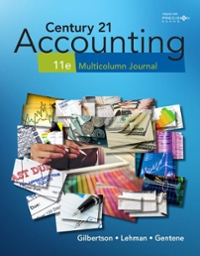Question
How should a Microsoft Excel sheet be completed for the following problem: Cases in Healthcare Finance , 6th Edition 12/1/2017 CASE 12 QUESTIONS MID-ATLANTIC SPECIALTY,
How should a Microsoft Excel sheet be completed for the following problem:
Cases in Healthcare Finance
, 6th Edition
12/1/2017
CASE 12 QUESTIONS
MID-ATLANTIC SPECIALTY, INC.
Financial Risk
1.
Compare the stand-alone risk/expected return of each of the four investments and the S&P 500
listed in exhibit 12.1.
a.
Please refer to excel sheet
2.
MSI is considering two investment strategies:
refer to excel sheet
- 50 percent in Healthcare Fund and 50 percent in Inverse ETF
- 50 percent in Healthcare Fund and 50 percent in Biotech Fund
Compare the risk of the two portfolios. Why does the risk differ?
When the returns for healthcare fund are low the returns of inverse ETF are high and vice
versa, making them negatively corelated hence the negative correlation coefficient. The returns of
healthcare fund and biotech fund are positively correlated hence the positive correlation coefficient.
3.
a.
Use the historical returns in exhibit 12.2 to create a graph with market characteristic lines for a 1-
year T-Bill, Healthcare Fund, Inverse ETF, and Biotech Fund. Compare the market risk of each of
the four investments.
refer to excel sheet
b.
What would happen to the overall risk of a well-diversified portfolio with an investment in a
1-Year T-Bill? Healthcare Fund? Inverse ETF? Biotech Fund?
i.
Since a beta of 1.0 indicates that a project's return has same degree of
changeability as the market. The only portfolio above 1.0 was biotech, so the other
three would reduce the risks of a portfolio, but biotech would increase the risk.
c.
What does the distance between the market characteristics line and the expected return of
an investment indicate?
i.
Diversifiable risk is shown on the regression line by looking at the distance
between the points on from the line. Based on this and my graph, year one is spot
on the line where as inverse ETF has the furthest space between its points and the
lines. This indicates that year one has no diversifiable risk, whereas inverse ETF
shows the most diversifiable risk. The points for healthcare and biotech are close to
their lines showing minimal diversifiable risk.
4.
a.
Construct a Security Market Line graph and plot the expected return of each investment on the
graph.
refer to excel sheet
b.
If you were an individual investor with a well-diversified portfolio, which investment(s) in exhibit 12.1
would you buy? Why?
As an investor inverse ETF would be the best choice due to the beta value being
negative and having the highest required return. The next best choice would be healthcare fund
followed by 1-yer t-bill. Biotech fund would be the last choice because it has the highest beta and a
negative required return.
c.
What does the distance between the Security Market Line and the expected return of an investment
indicate?
The distance indicated the difference between the expected rate and the
required rate of return on a stock, also known as excess return
.
Copyright 2018 Foundation of the American College of Healthcare Executives.
Not for sale.
Rate 3 more documents to earn a free unlock.
Helpful Unhelpful
Case Questions Cases in Healthcare Finance
5.
a.
Is the return on the one-year T-bill risk free?
The payments should be made unless an unexpected event occurs. The T-bill offers same
return (7%) no matter what the exonymic state is and therefore is reasonably risk free. It is
considered risk free only in the sense of nominal. Even though the investor is guaranteed a 7%
nominal return, it will ultimately depend on inflation over the next year, making the real return
uncertain. For instance, if the interest rate increase then the bill's price will decline and then you
should sell the bill to raise cash to prevent getting less than 7% in return.
b.
Suppose MSI wants to construct a portfolio of stocks that has an expected return equal to the risk-
free rate. Is such a portfolio possible? Is such a portfolio likely?
If the portfolio has a beta equal to zero, then this would be possible. However, in practice
it is unlikely to find a stock that have non-positive betas and therefore it would be impossible to have
a stock portfolio with a zero beta.
c.
Suppose that you choose to hold a single stock investment in isolation. Would you be compensated
for all of the risk that you assume? Explain.
It is not likely that you will be compensated for your risks sense you chose to take
them. If there were to be a stock that was priced low enough to provide a return that would
essentially compensate your risk, then the returns would look like a good option to diversified
investors. They would then bid the price up and lower the expected future return for diversified
investors meaning diversified investors are in key components for determining price.
6.
In your opinion, what are three key learning points from this case?
- returns determine the risk of a portfolio
- one way to decide whether to buy or sell is to compare required rate of return for each
- beta values are important for determining the volatility of the project returns
Questions -
2
Step by Step Solution
There are 3 Steps involved in it
Step: 1

Get Instant Access to Expert-Tailored Solutions
See step-by-step solutions with expert insights and AI powered tools for academic success
Step: 2

Step: 3

Ace Your Homework with AI
Get the answers you need in no time with our AI-driven, step-by-step assistance
Get Started


